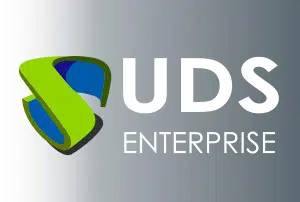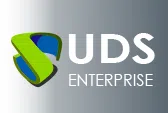What is a virtual desktop?
A virtual desktop is a technological solution that enables users to access a desktop environment from anywhere via the internet. Unlike a physical desktop, which is tied to specific hardware, the virtual desktop is hosted on a remote server.
This means users can access their work tools, including programs, applications, files, and personalized settings, from any internet-connected device, such as a laptop, mobile phone, or tablet.
This technology has significantly evolved, now offering a flexible and efficient solution to ensure secure 24/7 access to workplaces for any organization with IT users.
Benefits of virtual desktops for businesses
Flexibility and mobility
Virtual desktops allow employees to access their work environment anytime, anywhere, and from any device, promoting remote work and mobility. This is particularly useful for companies with geographically distributed teams or those adopting flexible work policies, supporting work-life balance and the retention of international talent.
Enhanced security
By centralizing data and applications on secure servers, virtual desktops significantly reduce the risk of data loss or theft. Connections are encrypted end-to-end, and data travels encrypted. Companies can implement more robust and uniform security policies, such as Zero Trust and multi-factor authentication (MFA), if the chosen solution allows.
Cost reduction
These solutions reduce the need for expensive hardware and its maintenance. By using cloud computing resources, companies can optimize their operational expenses. Additionally, it allows the reuse of obsolete IT equipment and extends the lifespan of corporate devices, saving costs. This also improves energy efficiency, with considerable reductions in electrical consumption.
Simplified management
Software administration and updates become much simpler, as everything is managed centrally and automatically from a single control panel accessible via the internet. IT specialists create user profiles based on templates to provide each user with the exact tools they need, with optimized performance. This saves time and resources in technical support and IT management.
Scalability
Virtual desktops enable companies to scale their resources quickly and efficiently, adding or removing workplaces as needed. With a single click, they can immediately deploy as many virtual desktops as necessary and reduce them similarly, adjusting resource usage to real-time needs.
Sectors where virtual desktops are most common
- Education: Educational institutions implement these systems to facilitate remote access to educational resources for students, teachers, and researchers. They also enable remote work for administrative and services staff.
- Financial services and banking: The financial sector uses virtual desktops to securely handle confidential data, ensuring compliance with current regulations and customer privacy.
- Healthcare: Healthcare professionals access medical records and clinical tools securely through virtual desktops, improving collaboration and efficiency while ensuring data confidentiality and privacy.
- Telecommunications and customer service: These sectors leverage virtual desktops’ ability to support remote call center operations and customer service teams. They are particularly useful for handling demand peaks and deploying the necessary number of workstations for each campaign.
- Government and Public Services: Government entities use them to enhance data security and interdepartmental collaboration, manage multiple locations centrally, and facilitate hybrid work systems for employees.
- Technology and software development: Tech companies use virtual desktops to create collaborative and secure development environments, attracting and retaining professionals worldwide.
Technologies used in virtual desktops
Connection broker
The connection broker is the key software in a virtualization platform. It manages and deploys virtual desktops and applications, allowing users to access the programs defined by the administrator and orchestrating the interoperability of all infrastructure components.
Infrastructure as a Service (IaaS)
IaaS provides the necessary computing resources to host and manage virtual desktops in the cloud. Offering a scalable and flexible platform, IaaS facilitates adaptation to the changing needs of companies and users.
Network and communication protocols
Virtual desktops use a variety of protocols to ensure a secure and efficient connection between the user and the remote server. For Virtual Desktop Infrastructure (VDI), this type of components are particularly relevant, because they enable responsive communication between users and virtual desktops, contributing to a seamless and productive remote desktop experience, providing users with the performance they need. VDI not only facilitates remote desktop access but also plays a crucial role in managing and maintaining the security, integrity, and privacy of transmitted data.
How virtual desktops work
Virtualization process
Virtual desktops work by creating a digital instance of the user’s work environment, stored and managed on a central server. This technology allows for simpler configuration and maintenance of work environments.
Remote access and security
Security is a critical aspect of virtual desktops. Measures such as two-factor authentication, encryption, and end-to-end data encryption are implemented to protect data and user privacy.
Integration with operating systems and applications
Virtual desktops are compatible with various operating systems and applications, allowing users to maintain their usual work environment with the flexibility to access it anytime, anywhere, and from any device.
Types of virtual desktops and their uses
Persistent virtual desktops (Persistent VDI)
Persistent virtual desktops are like a personal space in the cloud that retains all your settings and files, even after disconnecting. They function similarly to a personal PC, keeping changes and customizations made by the user.
This type of desktop is ideal for those needing a consistent and highly personalized environment, such as graphic designers, software developers, or stock brokers, who benefit from greater continuity in their workspace.
However, it has certain drawbacks, as each user has a dedicated virtual machine that does not automatically delete anything, requiring more storage and backup resources. Each desktop is managed and administered individually, and in case of a threat, it is not automatically eliminated upon session closure.
Non-Persistent virtual desktops (Non-Persistent VDI)
Unlike persistent ones, non-persistent virtual desktops offer a renewed experience with each login, resetting to their original state. This has significant security advantages; in case of an attack, simply logging out and back in eliminates the risk.
They do not store user customizations or data on the machine itself, saving storage space. This information is stored in user profiles, automatically loaded at startup, providing users with them at all times.
They also simplify IT management and administration to the maximum, as they are based on customizable templates, applying patches, updates, etc., centrally and automatically with a single click.
This type of desktop is recommended for all user profiles, reducing incidents related to software use in any organization.
Session-based virtual desktops (RDS, Remote Desktop Services)
Session-based virtual desktops, also known as Remote Desktop Services or RDS, allow multiple users to share desktops deployed on a single server, each operating in their own independent session. These desktops guarantee the privacy and security of each session, being an efficient option for companies seeking to maximize their hardware resources. They are especially useful in corporate environments where multiple employees need simultaneous access to centralized applications and resources.
Dedicated virtual desktops (DaaS, Desktop-as-a-Service)
Known as DaaS (Desktop-as-a-Service), this cloud service model provides virtual desktops hosted and managed by an external provider. It eliminates the need to manage hardware and software locally, reducing operational costs and simplifying IT management by offering an optimized and always-available work environment.
They are ideal for users requiring high performance and specific resources, such as professionals in engineering or data analysis, due to their ability to handle intensive computational demands and offer a highly personalized user experience. Organizations not wishing to invest in hardware and externalize the management of their VDI infrastructure often opt for this model.
Cloud-hosted virtual desktops (Cloud VDI)
Cloud-hosted virtual desktops, also known as Cloud Hosted Desktops or Cloud VDI, are hosted on public, hybrid, or multi-cloud infrastructures. They are an excellent option for companies that work on campaigns or increase and decrease the number of employees as needed, providing great scalability and flexibility, supporting the hiring of international talent.
Hybrid VDI (Hybrid virtual desktops)
Hybrid VDI combines the best of both worlds: the features of on-premise and cloud virtual desktops. In this model, some virtual desktops and applications run on the company’s internal servers, while others are hosted in the cloud. This modality is useful for organizations that, due to regulations or internal policies, need to keep certain user profiles’ resources on company servers. It is a flexible solution that can adapt to different work scenarios and security requirements. It offers the versatility to adjust to a company’s specific needs, allowing for a smooth transition between local and cloud-based desktop environments.
Case studies in virtual desktop implementation
Virtual desktops have become a key tool in the era of digital transformation, positively impacting various sectors such as private companies, public administration, education, and healthcare. Their ability to offer flexibility, security, and efficiency has been crucial in adapting to new remote work modalities and the growing demands for scalable and secure IT solutions.
At Virtual Cable, we recognize the relevance of these solutions in today’s business world and strive to offer the most advanced tools to meet the needs of a dynamic business environment. Organizations in over 110 countries trust UDS Enterprise, our digital workplace solution, to provide secure access to their workplaces 24/7 from anywhere and any device.
UDS Corporate for Airbus Defense & Space
Airbus Defense & Space uses UDS Corporate, our VDI solution for large corporations, to provide their engineers with an isolated and secure work environment, with optimized performance for critical tasks such as simulation, mission, and high computing, ensuring airworthiness certification.
UDS Government for the Huelva Provincial Council
The Huelva Provincial Council trusts UDS Government for its secure hybrid work system. They sought a compatible and Open Source-based solution capable of automating and standardizing the workplaces of 80 municipalities and 5 offices, providing an optimal user experience.
UDS Education in the EVITA Project
Virtual Cable is a leader in digital workplace implementations in the education sector in Spain. An example is the EVITA project of the University of Murcia. Based on UDS Education, it promotes the training and digital inclusion of people with disabilities through an Inclusive Virtual Desktop with Applied Technologies. Each user personalizes their experience according to their needs, being able to enable everything from a magnifying glass to dictation software.
UDS Health for Health Transportation Group
In the health sector, the Health Transportation Group project stands out, which trusts UDS Health to manage the logistics of 3,000 ambulances and more than 5.4 million services per year in 380 bases. Its virtual applications include ambulance management, mapping and call center, improving support for local and remote users.
These are just a few examples, as workplace virtualization solutions are useful in terms of efficiency, cost savings and improved sustainability for organizations in any sector, as long as they have IT users.
Frequent questions
What are the benefits of using virtual desktops?
24×7 remote access, from any location and device to the workplace, improved security, cost reduction, sustainability, simplified management and scalability.
What are the differences between a virtual desktop and a physical desktop?
The virtual desktop is hosted on a remote server and is accessible from any device with internet, while the physical one is linked to specific hardware.
Are virtual desktops secure?
Yes, they offer increased security by centralizing data on secure servers, data encryption, end-to-end encryption, multi-factor authentication (MFA), and the implementation of robust security policies, which can be intrinsic to the solutions or specific to the company. organization.
Can I customize my virtual desktop?
Yes, virtual desktops allow customizations and adjustments according to the user’s needs.
What do I need to access a virtual desktop?
You only need a device with an internet connection, such as a desktop computer, laptop, mobile phone or tablet.
How does using virtual desktops affect application performance?
Performance is optimized to deliver the best user experience for every employee. It may vary depending on cloud infrastructure and server capacity.
Are virtual desktops suitable for all companies?
They are versatile and can fit most businesses, although their suitability may vary depending on specific needs and IT infrastructure. They are generally suitable for all companies, but not necessarily for all user groups within them.
How much does it cost to implement virtual desktops?
The cost varies depending on the solution chosen, the scale of implementation and the specific services required, but, in any case, it represents a long-term cost reduction.
How are virtual desktops managed?
They are managed centrally. Thanks to VDI solutions, the entire IT infrastructure is managed from a single console accessible over the Internet, automating software administration, updates, and application of patches and security policies.
How can I start a virtual desktop project?
Identify your specific needs, analyze the different user profiles within your organization and research service providers. Ideally, perform a proof of concept to evaluate the solution before a full implementation.







0 Comments